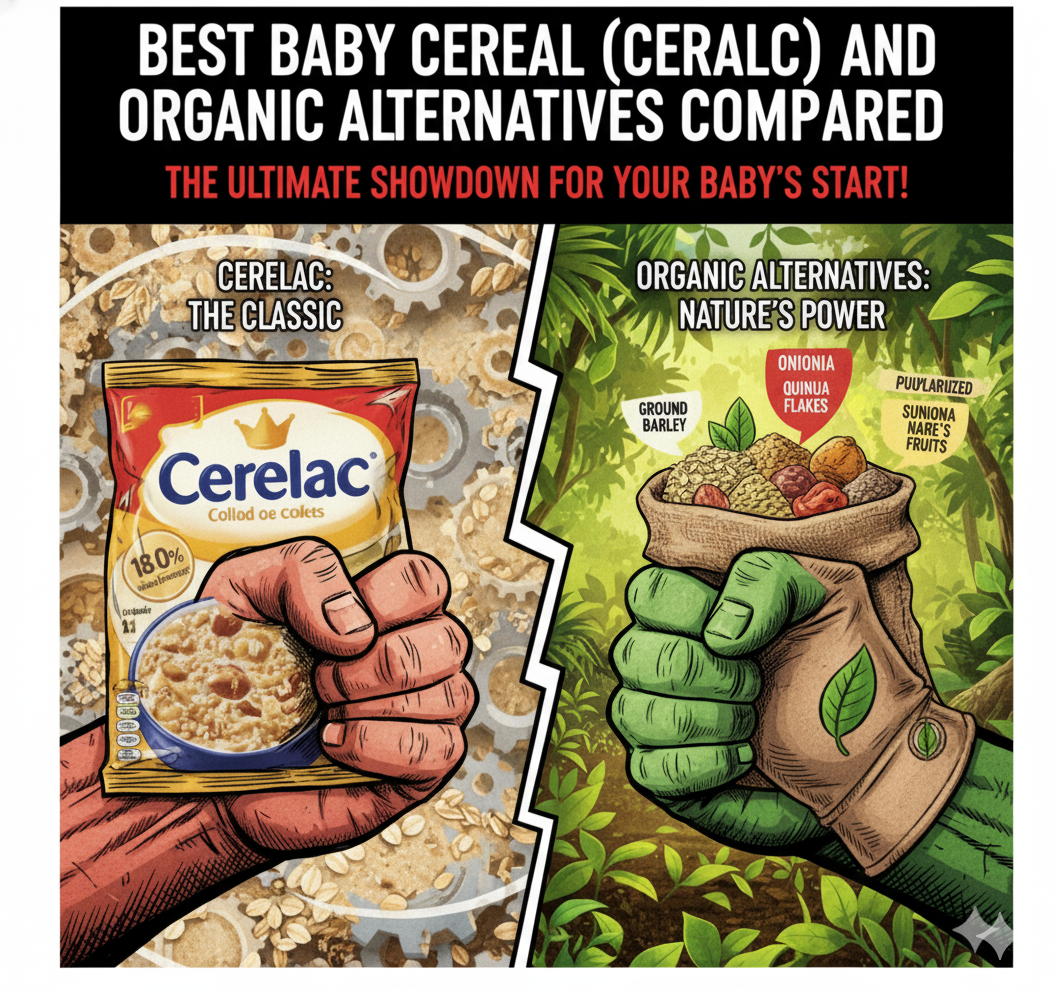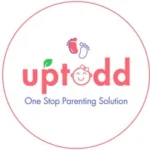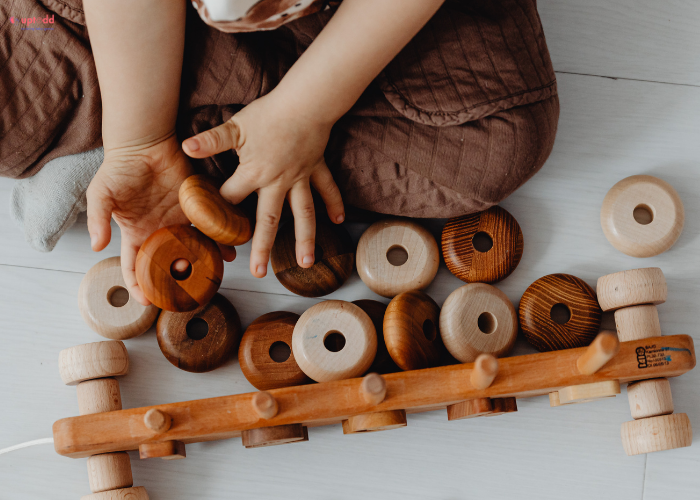
Why Wooden Toys Must Be Your Baby’s Toys
Topic
Why Wooden Toys Must Be Your Baby’s Toys
─────────
Related Skills
Introduction: Why wooden toys?
For Wooden Toy , As parents, we always make sure to provide our babies with the best things. We do not compromise with their safety and quality. One such universal thing is toys! We always need them to keep our babies busy and to support their learning in a fun way. But, with so many options available, it can become a little overwhelming to decide which toys will truly benefit our child’s development. That’s where these toys come in! These simple yet powerful playthings are more than just trendy- they offer many advantages along with the safety of your little ones! In this blog, let us explore why wooden toys should be your go-to choice when it comes to toys.
In this guide, we’ll uncover why wooden toys should be your go-to choice for your child’s playtime, focusing on both safety and developmental benefits.
What We’ll Cover in This Blog
In this guide, we’ll walk through everything parents need to know about wooden toys why they matter, how they help, and why they’re a smarter choice over plastic toys. Specifically, we’ll cover:
- Properties of Wooden Toys: What makes them unique, safe, and special for babies.
- Safety & Durability: Why wooden toys are long-lasting and worry-free compared to plastic ones.
- Eco-Friendly Advantage: How choosing wooden toys supports sustainable parenting.
- Developmental Benefits: From boosting imagination and focus to building motor, sensory, and social-emotional skills.
- Expert Insights: Professional advice from child development specialists on why wooden toys are essential.
- Final Takeaways: Why wooden toys are not just playthings but tools for growth, creativity, and future learning.
- Parent FAQs: Clear answers to the most common questions parents ask about baby toys.
Properties that make wooden toys a good choice
Wooden toys aren’t just playthings , they are thoughtfully designed tools that combine safety, durability, and developmental value. Their unique properties make them stand out in ways plastic toys often can’t. Here’s what makes them so special
For More About Toys :- Baby Toys: Best Picks
Wooden toys are Natural and Safe for Babies
One of the biggest concerns for parents when choosing toys is safety. These toys are made from natural materials like pine, cedar, or birchwood, which are non-toxic and safe for babies to chew on. Many wood toys use water-based, lead-free paints, so you can feel confident that your child isn’t exposed to harmful chemicals like BPA or phthalates, often found in plastic toys. This makes such toys a worry-free option when your little one keeps on putting toys in their mouth.
- Made from woods like beech, birch, or pine.
- Finished with water-based, lead-free paints.
- Safe for babies who explore by chewing or mouthing toys.
Which WoodenToys are Durable
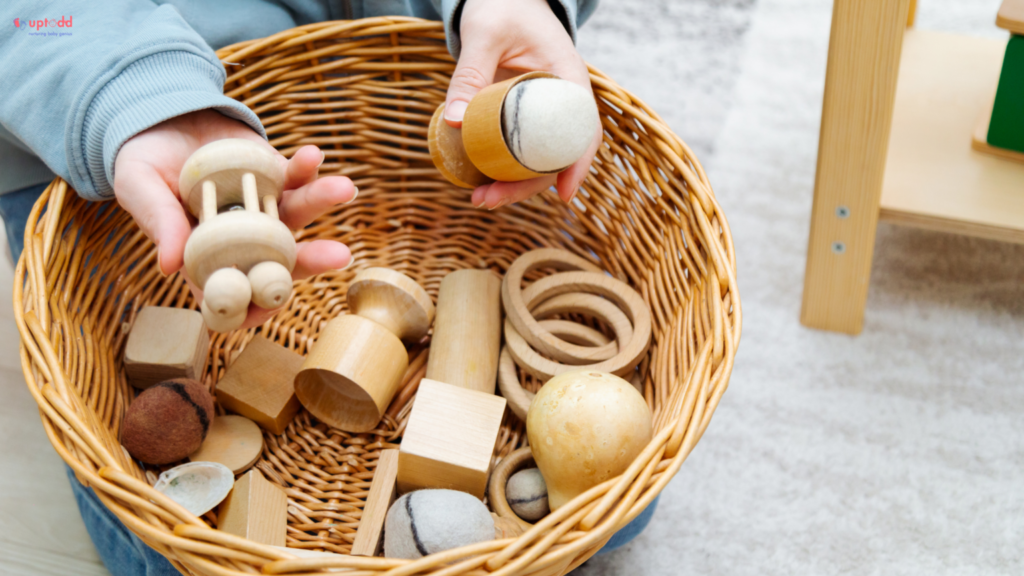
We all know that babies can be tough on their toys! Throwing them from huge heights, banging them together, and even putting them in their mouth to chew. Fortunately, these toys come to the rescue. They are sturdy and are built to last. Unlike plastic toys that often break or wear down quickly, wooden toys can withstand years of play. Their durability not only makes them cost-effective but also allows them to be passed down from one child to the next, adding versatility and sentimental value to them.
- Stronger than plastic, they can endure throwing, chewing, and banging.
- Less likely to break into sharp pieces making them safer long term.
- Can be passed down as keepsakes across siblings or generations.
Environmentally Friendly
In today’s eco-conscious world, many parents are mindful of their environmental impact. These toys are a sustainable choice because they are biodegradable and recyclable. When compared to plastic toys, which can take hundreds of years to decompose and often release harmful chemicals into the environment, wooden toys offer a much greener alternative.
- Wooden toys are biodegradable, recyclable, and renewable.
- By avoiding plastic, parents reduce landfill waste and teach children the value of sustainability.
Timeless and Aesthetic Appeal
You will all agree when we say this – wooden toys are simply beautiful. Their timeless designs are often more appealing than plastic toys. Wooden toys can fit seamlessly into any nursery or playroom and provide a visually calming environment for both you and your baby. Their clean lines and classic look create a calm, learning-focused space.
- Wooden toys are timeless , calm colors and simple lines make them visually soothing.
- Unlike flashy electronic toys, they don’t overwhelm; instead, they invite focused play and imagination
Searching For Montessori Toy – Montessori Toys: How to Choose Them for Your Toddler
Developmental Benefits of wooden toys
Wooden toys aren’t just fun they play a direct role in shaping your baby’s cognitive, motor, and sensory development. Unlike plastic toys that often distract with lights and sounds, wooden toys focus on skill-building through active engagement.
Imaginative and language best pick – Dancing Cactus Toy: Is It Worth Your Investment?
Wooden toys encourages imagination and Open-Ended Play
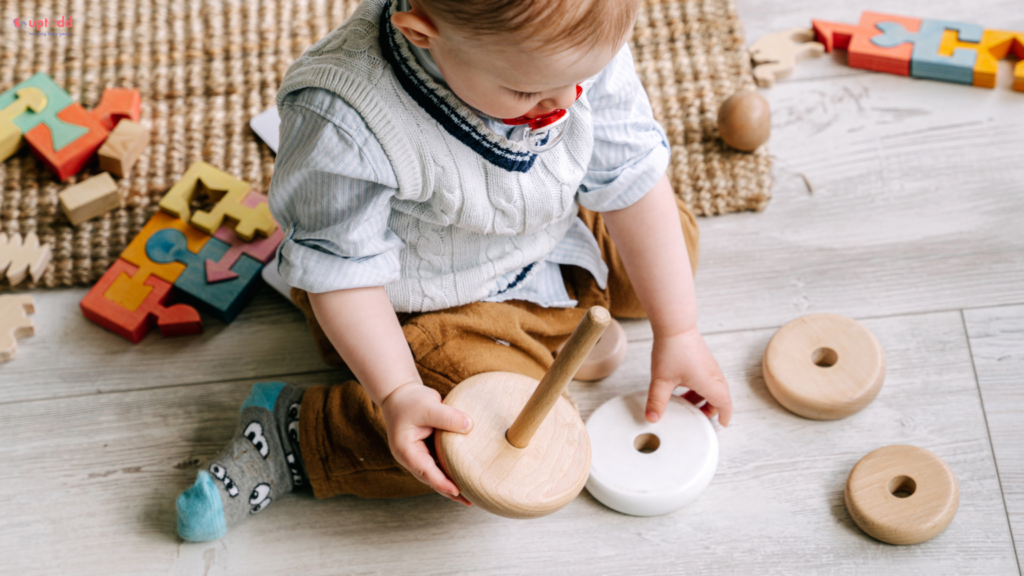
Wooden toys play a great role in inspiring creativity. They can create endless possibilities during playtime. A set of wooden blocks, for example, can become a castle, a bridge, or even a spaceship in the imaginative world of your little one. Because they are open-ended, they give children the freedom to explore, problem-solve, and build different things. This boosts their cognitive skills while having fun.
- A set of wooden blocks can be anything: a castle, a bridge, or even a rocket ship.
- Because they don’t dictate how to play, wooden toys stimulate creativity and storytelling skills.
- Open-ended play supports problem-solving, independent thinking, and innovation—all critical for early learning.
Wooden toy fosters Fine Motor Skills and Coordination
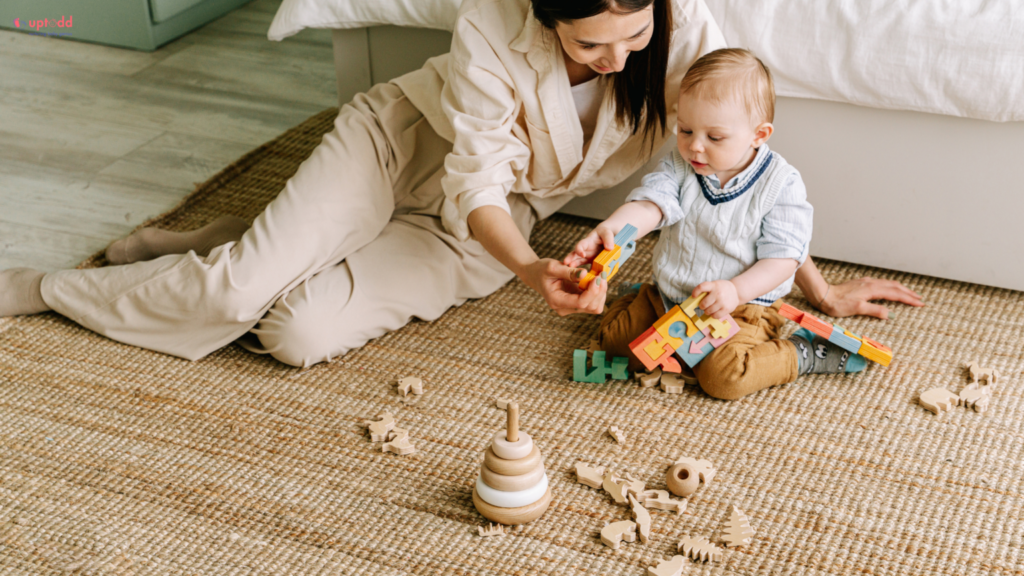
When your little one is manipulating wooden toys, they are working up their little fingers. Whether it’s stacking blocks, completing puzzles, or playing with wooden trains, it all helps your baby refine their fine motor skills. Picking up and placing small wooden pieces into position requires precise hand-eye coordination, which strengthens muscles and develops the dexterity needed for tasks like writing and using utensils.
- Activities like stacking blocks, fitting puzzle pieces, or moving wooden trains require grasping, balancing, and precise placement.
- These actions strengthen finger muscles and hand & eye coordination.
- Such skills later help with writing, buttoning clothes, and self feeding.
Promotes Sensory Exploration
Wood is amazing for sensory exploration for your baby. Its weight, texture, and even the subtle wooden scent provide a sensory-rich experience. Unlike plastic, which can feel cold and artificial, wood offers warmth and variety, enhancing your child’s sensory experience. In fact, research says that a room filled with such toys can help people stay calm.
- Wood has a unique feel, natural scent, and warm texture.
- Babies learn through touch, and wooden toys provide a rich sensory experience that plastic can’t match.
- Different sizes, weights, and shapes encourage exploration and curiosity.
Help Increase Attention Span
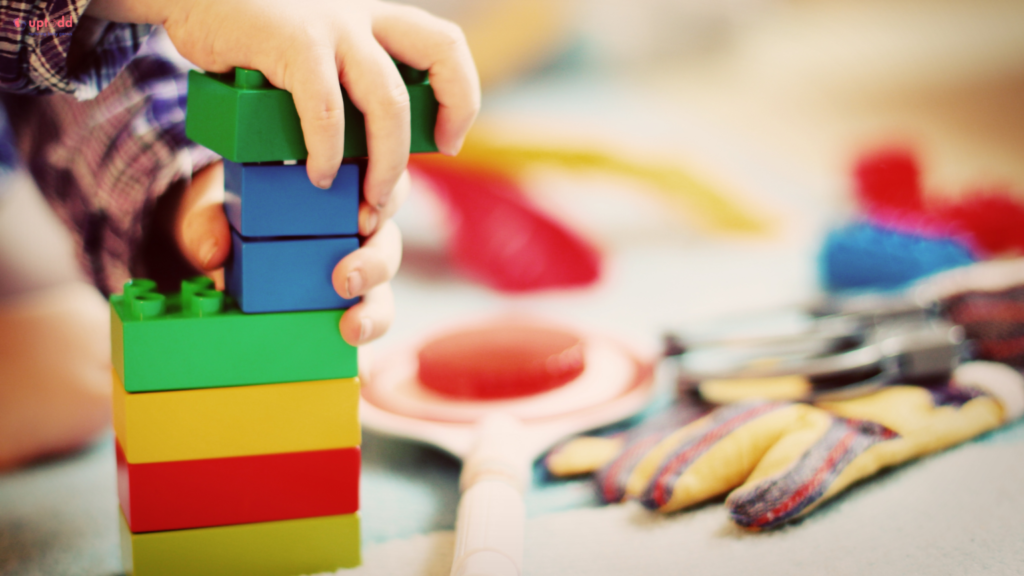
The plastic toys that are readily available use too many sounds, lights, colors, and functions. These things tend to overstimulate and overwhelm your baby. They offer immediate gratification and because of that the focus on learning new skills gets lost. These toys are simple and they focus on the skills your child can pick and build their concentration. Their simplicity helps increase your little one’s attention.
- Many electronic toys overstimulate with flashing lights and loud sounds, leading to shorter attention spans.
- Wooden toys are simple, quiet, and engaging, helping babies concentrate for longer periods.
- This ability to focus supports later learning in school and everyday problem-solving.
Encourages Social & Emotional Development
Wooden toys are not just about physical or cognitive skills they also nurture your child’s social and emotional growth. Many wooden toys, such as kitchen sets, dollhouses, or building blocks, are designed for group play and role play
- These interactions build empathy, communication, and social skills—key aspects of emotional intelligence.
- Toys like wooden kitchen sets or block-building games often involve sharing, teamwork, and role play.
Expert View: Why wooden Toys Matter for Your Baby’s Growth
Dr. Anne (Child Expert & Researcher)
As a child development specialist, I often remind parents that toys are not just objects of entertainment they are the tools through which babies make sense of the world, build early skills, and express creativity. While today’s market is overflowing with flashy, button-activated plastic toys that light up and sing at the touch of a finger, research and experience consistently show that these toys can overwhelm babies, offering instant gratification but very little opportunity for imagination or skill-building. Wooden toys, by contrast, are simple, open-ended, and sensory rich, which makes them uniquely powerful for early development.
The natural textures, gentle weight, and even the warmth of wood engage multiple senses in ways that cold plastic never can, while their durability ensures children can safely chew, bang, and handle them without risk. When a baby stacks wooden blocks, solves a puzzle, or pushes a small wooden train, they are not just playing they are strengthening fine motor skills, improving hand eye coordination, and laying the foundation for later abilities such as writing, dressing, and self feeding.
Beyond physical growth, wooden toys foster patience and focus. Without electronic distractions, children learn to concentrate deeply and persist through trial and error, which builds resilience and problem-solving skills. They also play a unique role in social and emotional learning: a set of blocks or a pretend wooden kitchen naturally invites group play, teaching children to share, cooperate, and empathize through role play. These small interactions nurture empathy and teamwork skills that last a lifetime.
Finally, choosing wooden toys reflects a conscious parenting choice one that avoids toxic chemicals often present in plastics and contributes to sustainability by reducing landfill waste. For many families, wooden toys even become heirlooms, passed down across siblings, carrying sentimental as well as educational value. My recommendation to parents is not necessarily to eliminate plastic toys altogether but to make wooden toys the foundation of your child’s play environment. In a fast-paced digital world where attention spans are shrinking and overstimulation is common, wooden toys return children to what really matters imagination, exploration, and meaningful growth.
Conclusion
As parents, every decision we make from the food our baby eats to the toys they play with shapes their growth, health, and happiness. In a world overflowing with plastic, lights, and electronic gadgets, wooden toys stand out for their simplicity, safety, and impact.
They are more than just playthings. Wooden toys provide:
- Safety and Peace of Mind: Made from natural, non-toxic materials, they keep your baby safe from harmful chemicals.
- Durability and Value: Strong enough to last through years of play, they can be cherished and even passed down as family keepsakes.
- Eco-Friendly Parenting: Choosing biodegradable and recyclable toys means you’re contributing to a healthier planet for your child’s future.
- Developmental Power: From boosting imagination and motor skills to nurturing focus and social-emotional growth, wooden toys support every stage of early learning.
- Timeless Joy: Their classic appeal never fades, bringing beauty and calmness into your baby’s play environment.
At the heart of it, wooden toys remind us that sometimes the simplest things are the most powerful. They encourage children to create, explore, and connect in ways flashing screens and noisy gadgets never can.
So, the next time you’re picking out a toy for your little one, consider reaching for wood over plastic. With wooden toys, you’re not only giving your child hours of joyful play you’re investing in their growth, focus, creativity, and future.
Explore UpTodd to unleash the hidden abilities of the baby.
FAQ’s
Q1: How to make baby toys?
Homemade toys can be wonderful if made from safe, natural materials. Simple wooden blocks, rattles, or cloth balls are great DIY options. Always ensure there are no sharp edges, toxic paints, or small detachable parts that could pose choking hazards.
Q2: What kind of toys for a 6-month baby?
At 6 months, babies are learning to grasp and explore. The best toys are wooden rattles, soft stacking rings, and large shape sorters. These encourage motor skills and sensory play while being safe for mouthing.
Q3: What is the liquid in toy baby bottles?
Many plastic toy bottles contain colored water or gel for pretend play. For safety, it’s best to avoid toys with unknown liquids inside and instead use solid wooden pretend-play sets that pose no risk of leakage or ingestion.
Q4: How to make soft toys for babies?
If crafting soft toys, use organic cotton or linen fabric with hypoallergenic filling. Avoid buttons, beads, or any small items. Alternatively, wooden teethers and rattles can serve the same soothing purpose while being easier to keep clean.
Q5: Do newborns need toys?
Yes, but newborn toys should be very simple,rattles, high-contrast wooden toys, or soft cloth toys. They don’t “play” actively yet, but safe toys help with eye tracking, sound recognition, and sensory comfort.
Q6: What makes a toy Montessori?
A Montessori toy is one that is simple, purposeful, and encourages hands-on exploration. Wooden toys are a natural fit for Montessori principles because they focus on real-life skills, independence, and creativity instead of overstimulation.
Q6: What kind of toys for babies under 1 year?
For babies under 1, the best toys are wooden teethers, rattles, stacking blocks, push-along toys, and large puzzles. They encourage grasping, crawling, and sensory exploration while being safe and non-toxic
Explore More
- Baby Toys: Best Picks
- Newborn Toys Suggested by Experts
- Montessori Toys: How to Choose Them for Your Toddler
- Dancing Cactus Toy: Is It Worth Your Investment?
- Shape Toy Exploration: Its Benefits and Drawbacks
- Hammer Ball Toy: Pros and Cons
- Wooden Hammer Toy: Pros and Cons
- Baby hight Chair Pros & Cons
Research & Resources
- https://www.researchgate.net/publication/355147398_Wooden_Toy_of_Chennapatna_India_Beauty_of_Form_Socio-Cultural_Reflection_on_the_Characterization_of_Toy
- https://www.researchgate.net/publication/327191697_Classification_of_Wooden_Toys_and_Survey_Analysis_of_the_Effects
- https://tecribresearch.blog/2020/11/01/why-wood-the-benefits-of-wooden-toys-for-children-and-their-families/
- Benefits of Wooden Toys

